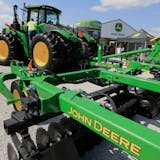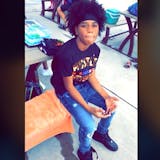David Lowry was impatient for the very old seeds to wake up. For days, Lowry, an associate professor of botany at Michigan State University, had entered a basement room at the school, peeked into the growth chamber and seen only dirt.
But April 23, he checked again and there it was: a tiny plant, its two leaves reaching upward.
"It was kind of an amazing moment," he said.
This was no average springtime sprout. Back in 1879, botanist William James Beal plucked that seed and thousands of others from different weedy plants in and around East Lansing, Mich. He then stashed them in bottles and buried them in a secret spot on the Michigan State campus, with the goal of learning whether they would still grow after years, decades or even centuries of dormancy. In mid-April, Lowry and four colleagues sneaked out under cover of night to dig one of the bottles up and plant its contents, thus continuing one of the longest-running experiments in the world.
Through late April and early May, more seedlings peeked above the soil. One is a bit of a mystery, with leaves that are hairier and sharper-edged than those of the other sprouts.
The rest are most likely Verbascum blattaria, a tall, jaunty-flowered herb that has emerged as the experiment's undisputed champ. Commonly known as moth mullein for its antenna-like stamens, this species was introduced to North America in the 1800s and lives an unassuming life in fields and meadows.
This plant's victory is lucky, because it probably wasn't supposed to be part of the experiment. Apparently Beal had intended to preserve a different species, Verbascum thapsus. That one was present in the first eight bottles and fared less well, with few of its seeds growing after only 20 years of dormancy.
V. blattaria first showed up in the ninth bottle, sneaking in through what was perhaps a case of mistaken identity by Beal. Since then it has been quite successful — out of the 50 V. blattaria seeds originally placed in each bottle, 31 germinated after 50 years, followed by 34 after 60 years, and so on. In 2000, when the previous bottle was dug up and tested, nearly half of the V. blattaria seeds grew successfully.



